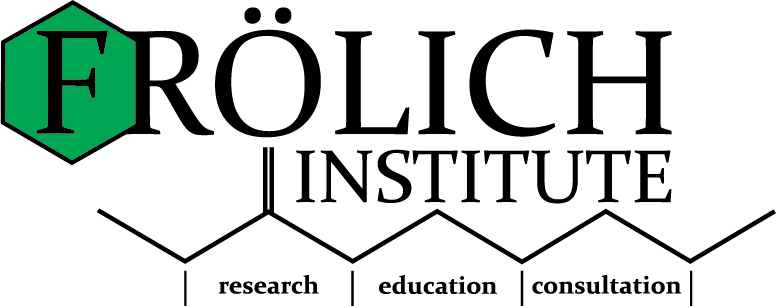LEARNING ACTIVITIES
EDUCATION
Data Integrity in Regulated Environments
A curious perspective.
1. Science of Sustainability Workshops.
Students explore qualitative and quantitative chemical and physical aspects of bioenergy systems and biomass They learn how to apply chemical and physical principles to understanding different energy resources and their environmental implications.
This 3-evening workshop examines the scientific aspect of sustainability and renewable energy systems, categorized by Earth, Air, Fire, Water and Spirit. It is designed for students whose knowledge of chemistry and physics is limited but have the desire to learn and understand these fundamental principles.
Topics range from thermodynamics, fluid flow, energy calculations, climate, and even quantum physics.
Example
“The panel was a big success. Students and I learned a lot from your contribution. The feedback from students was truly remarkable. All suggested that a panel like this should be done at the university level. I do agree with them. We are absolutely fortunate to have such remarkable wealth of expertise on our campus.”
— Abdou Lachgar, Ph.D
Professor of Chemistry
Associate Director, Center for Energy, Environment, and Sustainability
Wake Forest University
2. Biomass and Bioenergy Seminars.
Fundamental chemistry and physics of the biomass energy cycle, from combustion to fermentation.
While burning biomass releases about the same amount of carbon dioxide in the atmosphere as fossil fuels, fossil fuels release carbon dioxide from millions of years ago, whereas biomass energy releases only the carbon dioxide recently captured during its growth. Therefore, when used to replace fossil fuel energy, the use of biomass energy has the potential to reduce carbon emissions. The most common sources of biomass energy are paper mill residue, lumber mill scrap, and municipal waste. Corn and soybeans are the most common feedstocks for biofuels. Ethanol, the biofuel corn produces, is widely used throughout the United States, and more than 95 percent of gasoline sold in the U.S. is composed of 10 percent ethanol to 90 percent gasoline. U.S. policy has encouraged the use of ethanol by mandating production levels over a 15-year period through the Energy Independence and Security Act of 2007.
However, the ethanol demand has not kept pace with the projections on which this policy based its production levels, and the “ethanol boom” has created a surplus of corn and significant supply of biomass waste that exceeds storage capacity across the U.S. In this paper, we argue that this surplus and associated biomass waste can be used to produce energy through direct combustion. Our study analyzes corn production and energy data for North Carolina in order to determine the feasibility and impact of using the direct combustion of corn to corn to produce electricity.
We introduce two different scenarios based on anticipated amendments to the ethanol production mandate policy. Scenario 1 uses North Carolina’s surplus, unharvested acreage, and stover to generate 132 MW of power, while Scenario 2 uses the supply in Scenario 1 plus the quantity currently earmarked for ethanol production to profitably generate 316 MW of clean, 125-day renewable biomass electricity. Furthermore, our findings indicate that direct combustion of corn at 10 biomass energy plants in the top 10 corn-producing counties of North Carolina could power 23 percent of North Carolina’s homes in Scenario 1 and 49 percent of North Carolina’s homes in Scenario 2, reducing coal carbon emissions by 221,000 and 420,000 MT, respectively.
3. Workshop for Analytical Instruments for Developing Countries.
Pittcon 2017 - Chicago IL
There is a critical need for fundamental analytical capacity in developing countries for areas such as food and feed safety, water quality, and environmental protection.
What would have to happen for our industry to bring high tech analytical options to low-resource (supplies, roads, communications), low and/or unreliable power, low-skill environments typically encountered in lesser developed countries?
Some solutions:
Solar Autoclaves
Solar vaccine refrigerator
Mobile “smartphone” instruments
River current power generation
Solar Water filtration
Field portable GC/MS/PID – VOC’s
Field portable XRF – Metals
Detectors – IR, UV/VIS, Colorimetric,
Chemiluminescent, Photometric – (Mostly VOC’s)
Surface reflectance – soil moisture, leaves
Raman – Hazard detection, explosives
Diode lasers w/photoacoustic - ammonia
Tungsten coil AAS - lead
Developing countries must survive with resource constraints unlike any in the developed world. Laboratory testing is needed to assure product and food safety, yet laboratory facilities are unreliable. This program is designed to build a global coalition to petition laboratory instrument manufacturers to develop robust, low-cost tools that can work in resource-constrained environments, beginning with farmers in Africa.
"I really think it would be worthwhile to run a full feature on this in The Analytical Scientist. We could raise awareness of the issues, put forward possible solutions and include suggestions on the role of instrument manufacturers and the government."
— Joanna Cummings
Deputy Editor - texere Publishing
"The involvement of instruments makers is a must, since they can provide not only financial support to introduce their equipment but also to collaborate on the key aspect of training specialists."
— Manuel Valiente
Professor of Analytical Chemistry
Department of Chemistry. Centre GTS
Universitat Autònoma de Barcelona
Executive Director of GTS.



